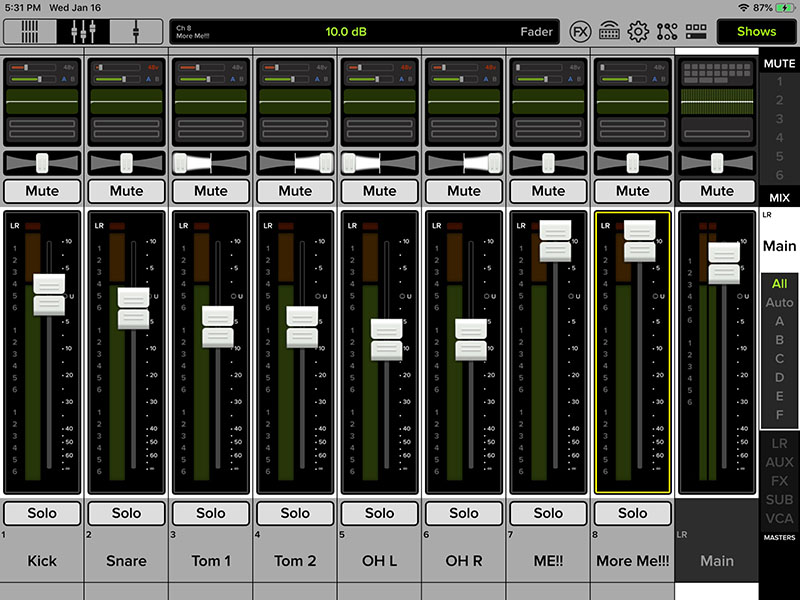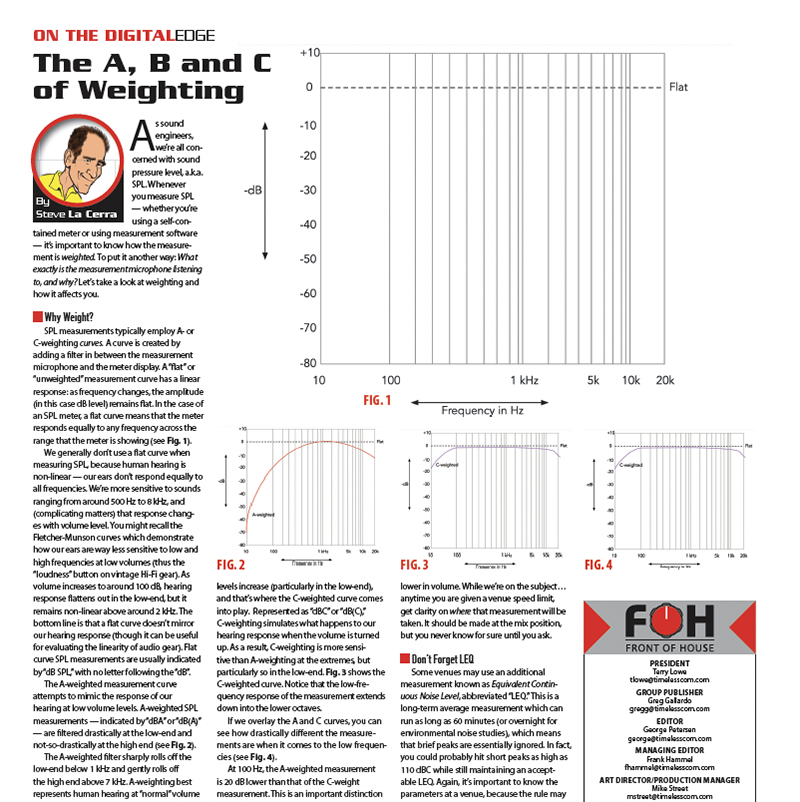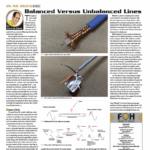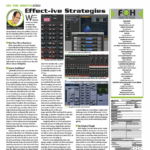
There’s no doubt that networked digital consoles have made our lives easier in many ways. We all know about the reduced need for outboard processing, drive and effects racks and copper snakes. We all love the way we can save and recall shows, and at the push of a button — change from a karaoke setup to a live band with 40 inputs. And of course, there’s the ability to mix remotely or walk the room while tuning a P.A. from a tablet.
Networking has generated a completely new category of product: the personal mixing system. Similar to the way it happened in the recording studio, musicians can run their own monitors via dedicated personal mixers, phone or tablet, and not bother a monitor engineer. Is that a good thing?
The Good
The idea of regional (or even local) acts on a tight budget carrying their own monitor system is very attractive — especially when used in conjunction with IEMs. Given the reduced cost of gear these days, creating a portable monitor rig is within financial reach. Cargo space is minimal because the mixing “console” doesn’t need to have a large work surface (or any work surface at all). It can simply be a mixer-in-a-stage box and — depending upon the house system — the act may be able to “patch in” using an off-the-shelf Ethernet cable. As any performer will attest, clearly hearing your bandmates in the monitors is a wonderful thing. Monitor world stays the same even when the outside world changes.
Outfitting each performer with their own mixer (or mixing app) can be a solution for certain problems. In situations where the FOH engineer is running monitors from the FOH desk, the engineer can set a basic mix and then hand off mixing duties to the individual performers. That reduces some of the headaches that plague FOH engineers saddled with the responsibility of mixing monitors. One could even make the case that a monitor engineer is no longer necessary. If each band member runs their own mix, what’s the point of paying a monitor engineer (and possibly paying for their hotel room)? No one knows better than the performer what they need to hear in their own mix, so why not cut out the “middleman” and let the performer do it?
The Bad
I’m not entirely convinced that giving performers control of their own monitor mixes is such a great idea. First and foremost, it’s a distraction. Do we really want to see a musician stop playing (or worse, stop a show) so that they can fiddle with their tablet to adjust their in-ear mix? There’s a reason that musicians get paid to do what they do, and there’s a reason engineers get paid to do what we do. Just as a musician practices to become adept at their instrument, we develop chops on our instruments (a.k.a. our mixing consoles). Those chops — which take years of experience to develop — range from understanding how to set the gain structure so that there will be room to make instruments louder, to applying EQ in an effort to reduce the audio muck that makes instruments difficult to hear in the monitors.
Anyone who’s spent time with a particular mixing desk knows that there comes a point when you’re familiar enough with the desk that you no longer think about the mechanics of operating it: you think about what you need to do and just do it. It’s not all that much different from a guitar player having the facility to play a riff that’s in their head without thinking “Okay, I need to place the first finger of my left hand on the seventh fret…”
Most performers understand the basics of EQ, panning and setting balances, but do they really understand compression and gating? Do they really know what a “knee” control does, or how to set gain staging? We all know some experienced engineers who barely have a handle on that type of stuff. It’s more than possible that sound quality of the monitor mixes will suffer when an inexperienced person is running them. And when monitor quality suffers, so does the performance.
An option would be for the FOH engineer to create a balance in the monitors and give the performer a “more me” mix limited to two channels: one for overall band volume and the other for the performer’s instrument or voice.
The Ugly
What happens when something goes wrong during the show? Any number of technical problems can arise ranging from the traditional (feedback, mix balances changing due to changes in instrument volume on stage) to the high-tech issues we’re dealing with these days (tablets losing their network connections or RF hits from interference, etc.)
Who will be there to deal with those problems? Definitely not the performers. Troubleshooting is where engineers earn their keep. A good engineer can recognize what frequency is squealing in a monitor and quickly solve the problem. Similarly, a thorough understanding of signal flow is invaluable when it comes to sidestepping problems in the heat of battle. Are the performers ready to coordinate frequencies for wireless IEMs and deploy the antenna? Hmmmm. Maybe not.
There are plenty of situations facing bands where mixing their own monitors is a necessity due to budget constraints. Many local acts struggle to make enough money to pay a front-of-house engineer, let alone a monitor engineer. For those acts it makes sense to run their own monitors because there’s no one else to do it. But where the budget permits, call a hit man and let them do their job.
Just because you can do something doesn’t necessarily mean you should do it.
Steve “Woody” La Cerra is the tour manager and front of house engineer for Blue Öyster Cult.



